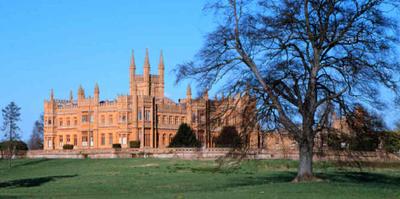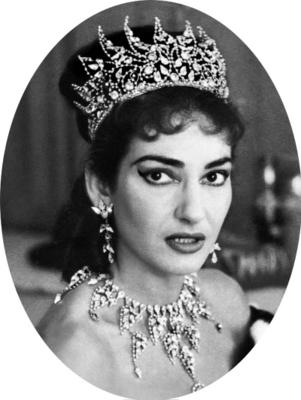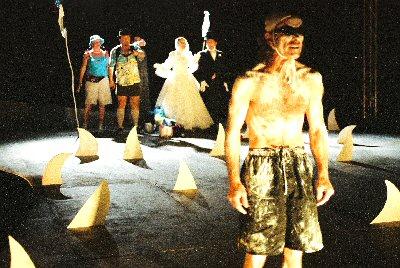Classical Month in Washington is a monthly feature that appears on the first of the month. If there are concerts you would like to see included on our schedule, send your suggestions by e-mail (praecentor at yahoo dot com). Happy listening!
Saturday, September 3, 1:30 pm
Stanley Babin, piano (Brahms and Beethoven) [FREE]
Sponsored by the Society of the Cincinnati and the Washington International Piano Arts Council
Anderson House (2118 Massachusetts Ave. NW)
Sunday, September 4, 8 pm
National Symphony Orchestra, Labor Day Concert [FREE]
U.S. Capitol, West Lawn
Thursday, September 8, 7 pm; Friday, September 9, 8 pm
National Symphony Orchestra, Prelude Festival Concerts (Rimsky-Korsakov, Tchaikovsky, Beethoven Third Symphony)
Kennedy Center
See the review by Jens F. Laurson (Ionarts, September 9)
Saturday, September 10, 6 pm
Emerson String Quartet (first in a five-concert series)
Museum of Natural History, Baird Auditorium (10th Street and Constitution Avenue NW)
For information on subscribing to the series, call (202) 252-0012
Saturday, September 10, 8 pm
Pallavi Mahidhara (teenage prodigy), piano (Mozart, Brahms, Stravinsky, Liszt)
F. Scott Fitzgerald Theatre (Rockville, Md.)
Kids 7-17 are free
See the review by Joan Reinthaler (Washington Post, September 12)
Sunday, September 11, 4 pm
Norwegian pianist Håkon Austbø (music by Alexander Scriabin and Olivier Messiaen, both influenced by "color hearing")
Hirshhorn Museum and Sculpture Garden [FREE, no ticket required]
See the review by Jens F. Laurson (Ionarts, September 13)
Sunday, September 11, 5:30 pm
Sujeito a Guincho Clarinet Quintet (Brazil) and singer Mônica Salmaso
Renaissance Mayflower Hotel, Colonial Room (1127 Connecticut Avenue NW), hosted by the Embassy of Brazil
Embassy Series
See the review by Lindsay Heller (Ionarts, September 12)
Wednesday, September 14, 7 pm
Dress rehearsal of Verdi's I Vespri Siciliani (starring Maria Guleghina and Franco Farina, conducted by Plácido Domingo)
Washington National Opera
Kennedy Center Opera House
Admittance for a suggested donation of $100 (or more), all of which will go directly to the American Red Cross for Hurricane Katrina relief: for information, call (202) 295-2420, weekdays between 10 am and 6 pm
Wednesday, September 14, 7:30 pm
U.S. Army Chorus, 50th Anniversary Concert
Kennedy Center, Terrace Theater
See the review by Daniel Ginsberg (Washington Post, September 16)
Thursday, September 15, 8 pm
Kemal Gekic, piano
Embassy of Austria
See the review by Cecelia Porter (Washington Post, September 17)
Friday, September 16, 8 pm [plus FREE Conversation with the artists at 2 pm]
David Finckel and Wu Han
Clarice Smith Performing Arts Center
See the review by Charles T. Downey (Ionarts, September 17)
Friday, September 16, 7:30 pm (North Bethesda United Methodist Church, 10100 Old Georgetown Road, Bethesda)
Sunday, September 18, 7:30 pm (Christ Lutheran Church, 8011 Old Georgetown Road, Bethesda)
Friday, September 23, 7:30 pm (Saint George's Episcopal Church, 915 N Oakland Street, Arlington)
Sunday, September 25, 7:30 pm (Christ Lutheran Church, 8011 Old Georgetown Road, Bethesda)
Donizetti, La Fille du Régiment (staged and complete)
Opera Bel Cantanti
See the review by T. L. Ponick (Washington Times, September 20) and the review by Mark J. Estren (Washington Post, September 20)
September 17, 20, 22, 25, 28, and October 1, 4, 2005
Giuseppe Verdi, I vespri siciliani (with soprano Maria Guleghina)
Washington National Opera
Kennedy Center Opera House
See the review by Charles T. Downey (DCist, September 18)
Saturday, September 17, 8 pm
National Philharmonic, with pianist Christopher Taylor
Music Center at Strathmore
See the review by Grace Jean (Washington Post, September 19)
Saturday, September 17, 8 pm
Winners of the 7th National Chopin Piano Competition (Mei-Ting Su, Rachel Kudo, Sean Kennard, and Esther Park, playing all Chopin, of course)
Embassy of the Republic of Poland (2640 16th St. NW)
Embassy Series
Saturday, September 17, 8 pm
Fairfax Symphony Orchestra, with Claude Frank, piano (Beethoven's fifth piano concerto and Tchaikovsky's fifth symphony)
George Mason University Center for the Arts (Fairfax, Va.)
See the review by Joan Reinthaler (Washington Post, September 19)
Sunday, September 18, 2 pm
National Symphony Orchestra, Prelude Festival Chamber Music Concert (all-Mozart program)
Kennedy Center, Terrace Theater
See the review by Joe Banno (Washington Post, September 20) and the review by Jens F. Laurson (Ionarts, September 24)
Sunday, September 18, 4:30 pm
Contemporary Music Forum (new music by Mumford, Perle, Silverman, Moe)
Corcoran Gallery of Art
See the review by Charles T. Downey (Ionarts, September 20)
Wednesday, September 21, 8 pm; Thursday, September 22, 7 pm; Friday, September 23, 1:30 pm
National Symphony Orchestra (Leonard Slatkin conducting, with violinist Itzhak Perlman)
Kennedy Center, Concert Hall
See the review by Jens F. Laurson (Ionarts, September 22)
Wednesday, September 21, 6:30 pm
Josef Mayr, piano, and Ingrid Wagner-Krafft, cello (Schulhoff, Wolfram Wagner, and Beethoven)
Residence of the Ambassador of Austria (2419 Wyoming Ave. NW), with dinner, for members of the Corcoran Gallery of Art
Thursday, September 22, 7:30 pm
Edmund Battersby, piano (playing on the 150-year-old Broadwood piano)
The Mansion at Strathmore
Thursday, September 22, 7:30 pm
Ian Bostridge, tenor, with Julius Drake, piano (Vocal Arts Society)
Kennedy Center, Terrace Theater
See the review by Daniel Ginsberg (Washington Post, September 24)
Friday, September 23, 8 pm
The Genius of Bach: Mass in B Minor (Washington Bach Consort)
Music Center at Strathmore
See the review by Charles T. Downey (DCist, September 24)
Saturday, September 24, 7 pm
National Symphony Orchestra Opening Ball Concert (with Emanuel Ax, Itzhak Perlman, Yo-Yo Ma)
Kennedy Center, Concert Hall
See the review by Daniel Ginsberg (Washington Post, September 26)
Saturday, September 24, 27, 30; October 2, 6, and 9
Trilogy (three acts from different operas, with Mirella Freni Sylvie Valayre in Fedora, Barbara Frittoli in Otello, and Christiane Noll in The Merry Widow)
Washington National Opera
Kennedy Center, Opera House
See the review by Charles T. Downey (Ionarts, October 1)
Saturday, September 24, 7:30 pm
Remy Loumbrozo and Arianna Goldina, piano (works by Ravel, Liszt, Schumann, Duruflé, Chabrier, and Brahms)
La Maison Française (4101 Reservoir Road NW)
Saturday, September 24, 8 pm
Barnabás Kelemen, violin, and Anne Eppersen, piano (Mozart, Schumann, Brahms, Bartók and Sibelius)
Embassy of Hungary (2950 Spring of Freedom St. NW)
Embassy Series
Saturday, September 24, 8 pm
Baltimore Symphony Orchestra with pianist Fazil Say (Gershwin and Dvořák)
Music Center at Strathmore
See the review by Jens F. Laurson (Ionarts, September 24)
Sunday, September 25, 2 pm
Arthur Nagle Memorial Concert (pianist Jie Chen, winner of Washington International Competition) [FREE, reservation required]
Kennedy Center, Terrace Theater
See the review by Cecelia Porter (Washington Post, September 27)
Sunday, September 25, 7 pm
Keyboard Conversations With Jeffrey Siegel: Mozart and Beethoven -- Passion and Pathos
George Mason University Center for the Arts (Fairfax, Va.)
Monday, September 26, 5 pm
Guarneri String Quartet Open Rehearsal [FREE]
Clarice Smith Performing Arts Center
Thursday, September 29, 8 pm
Baltimore Symphony Orchestra, with flutist Emily Skala (Rodrigo, Strauss, Beethoven)
Music Center at Strathmore
See the review by Lindsay Heller (Ionarts, October 1)
Thursday, September 29, 7 pm; Friday, September 30, 8 pm; Saturday, October 1, 8 pm
National Symphony Orchestra, with cellist Truls Mørk (Hovhaness, Elgar, Dvořák)
Kennedy Center, Concert Hall
See the review by Jens F. Laurson (Ionarts, September 30)
Thursday, September 29, 8 pm
Baltimore Symphony Orchestra: The Promise of Youth (with conductor Alan Buribayev and pianist Kirill Gerstein)
Meyerhoff Symphony Hall (Baltimore)
Friday, September 30, 7:30 pm
Prima Vista String Quartet (Music in the Age of Napoléon, part of Napoleon, An Intimate Portrait, co-organized with the National Geographic)
La Maison Française (4101 Reservoir Road NW)
See the review by Jens F. Laurson (Ionarts, October 2)
Friday, September 30, 8 pm
Daedalus Quartet with Donald Weilerstein, viola (Prokofiev, Haydn, Mozart) [FREE]
Library of Congress, Coolidge Auditorium
See the review by Joe Banno (Washington Post, October 3)
——» Go to Classical Month in Washington: August.







































































